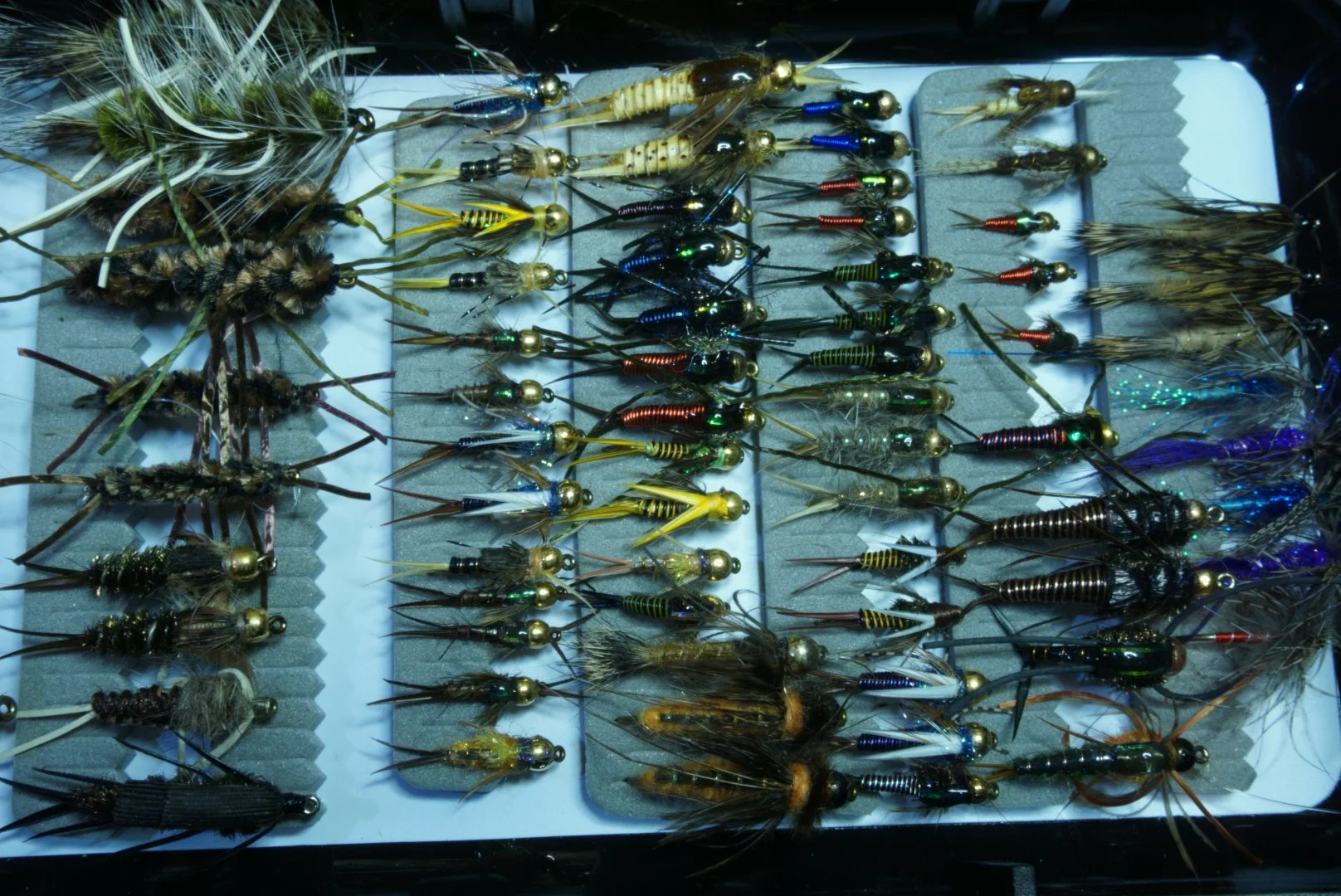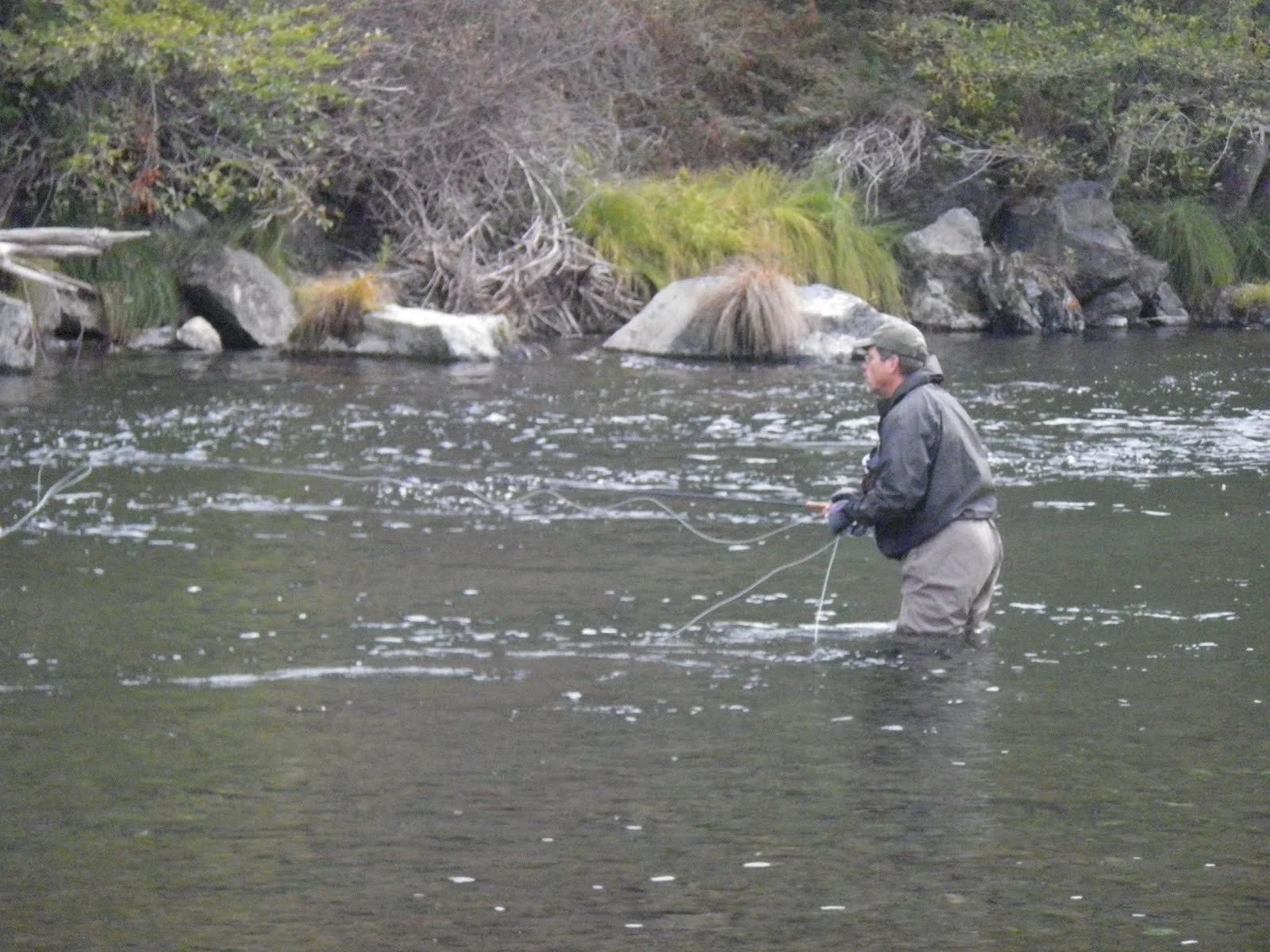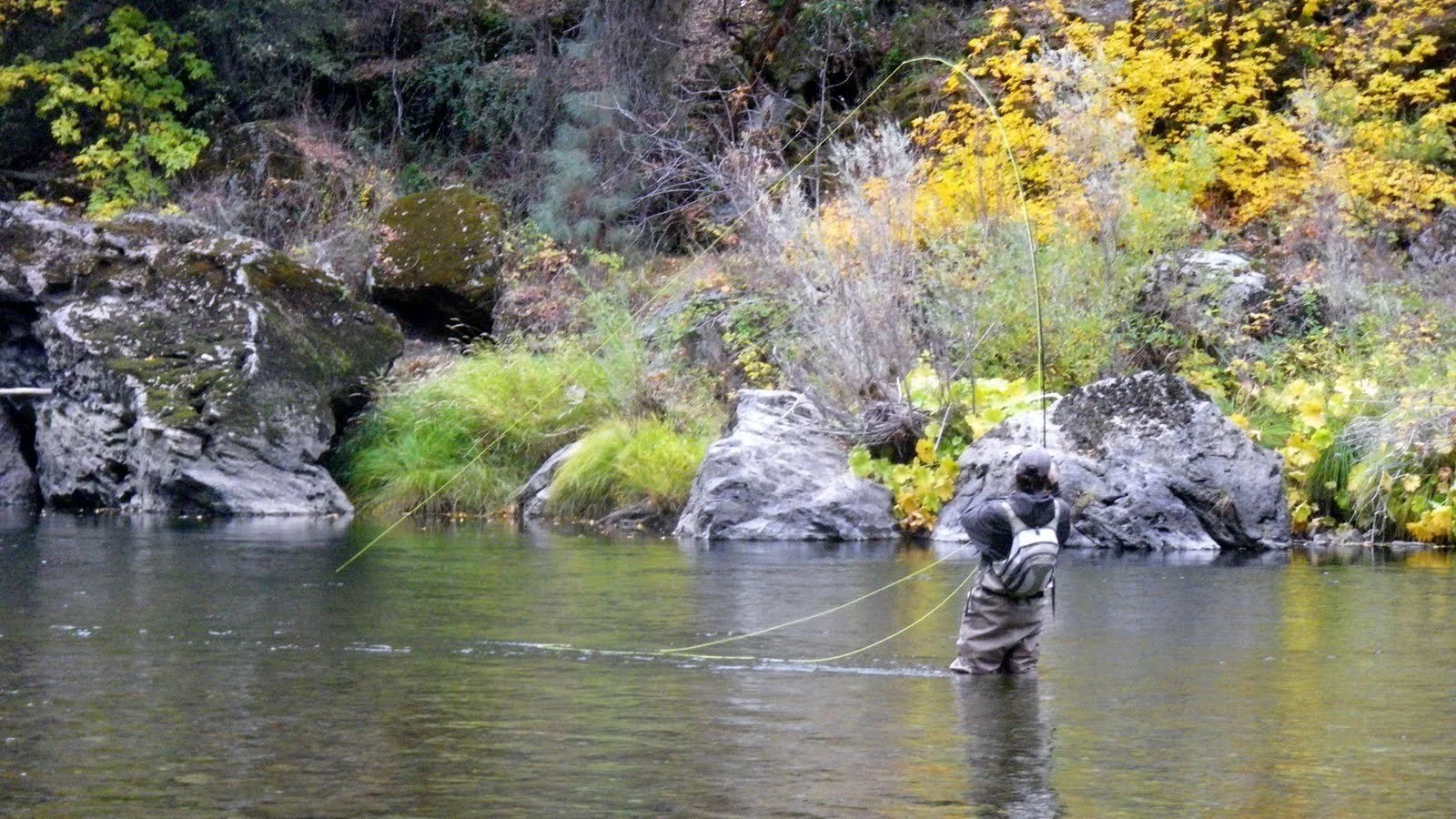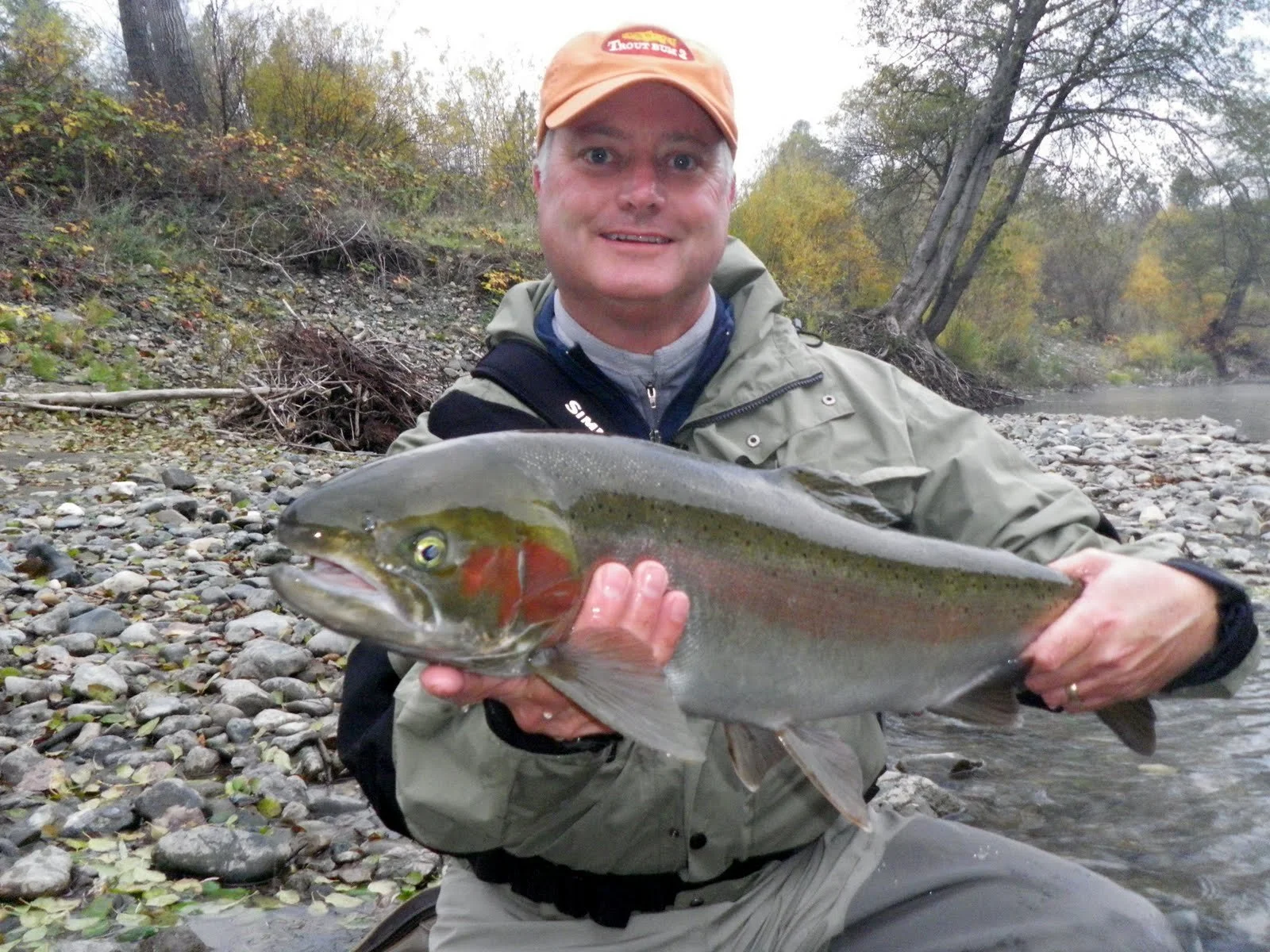Strengthened by Steel
It was just over a decade ago when I caught my first steelhead, but to this day I remember the tremendous power of these amazing fish. I have caught other heavy and strong fighting fish, but nothing compares to the strength and stamina of these anadromous fish caught in a freshwater river or stream. My first steelhead trip was in 2010 to the Trinity River in the coastal mountains of northern California west of Redding. The Trinity is the largest tributary of the Klamath river and joins the main branch of the river where the Klamath dips to its most southern point before it turns northwest and empties into the Pacific Ocean.
Our friend and unpaid guide for the weekend was Dave one of the fishiest people I know. We first met Dave in the Eastern Sierra where he was working for a local fly shop. In 2010, Dave was working nearby in Southern California, and we fished with him often on the local lakes and rivers. For years, Dave had been talking up the beauty of the Trinity River and the steelhead that lived there. He finally convinced us to put together a trip and so the journey began.
Fish of a thousand casts
I heard how difficult steelhead fishing was and how you had to make hundreds or thousands of casts to get a shot at a steelhead willing to eat your fly. Because Dave knew the river and the spots that were likely to hold fish, we improved our odds and without his guidance and patience the adventure described in this story would have been even more difficult. Steelhead come into and push upriver to spawn and unlike Salmon will lay their eggs and then make their way back to the ocean to start the journey all over again. Along the way fish will rest or hold in specific areas that have the right combination of water depth and flow to provide a safe spot for the migrating fish. Fishing the Trinity is a good option for a bunch of trout anglers on their first steelhead trip where most the anglers are nymphing on foot or from a drift boat or raft. The speed of the current, the size and depth of the water made it possible to nymph the river with our heavier 6 and 7 weight trout gear. Many of the famous steelhead waters of the west are large heavy flowing rivers that require specialized gear and techniques to fish them effectively.
The memories of the fish we caught on these trips are etched in my mind, but it is the fishing itself and how challenging it is to present a fly effectively that influenced my fly-fishing journey the most. Long slow drag free drifts with double nymph rigs and a sensitive indicator is the name of the game. The difficulty came in trying to present a fly on a long leader with heavy weight and indicator, often with trees or a steep bank to your back. As a trout fisherman we would typically be just a rod length or two from our desired target and the water would be shallow with correspondingly short leaders. Trying to cast cumbersome double nymph rigs with weights added as needed 20, 30, and up to 40 feet was frustrating and often a messy affair. After several false cast to get the flies to the target, if you didn’t have a tangled mess, immediate mending was necessary to get a drag free drift, and with our 9 ft trout rods waist deep in water, that proved a challenging task. After quartering the flies up stream and mending the line as the current required, you would feed line to extend the drift, all the while trying not to disturb your fly as it drifted just off the river bottom. All of this was in hopes of lengthening the drift and presenting your fly to a fish that could only be seen in your mind's eye. After you have successfully created a drift that could have covered 30, 40 to 50ft in assumed prime steelhead holding water you get to strip back all that line 3 to 4 feet at a time to the point where you can lift the entire rig up and out of the water to start the process all over again. Did I mention that steelhead are a fish of a thousand casts? Combine the difficulty of this new experience with the conditions (rain, sometimes deep water, and debris on the river bottom) and you have the ingredients for what can be a long and frustrating day.
Was that a fish
Now that you have successfully launched your depth charge into the water and fed several rods length of line into the drift you are rewarded with a sudden almost imperceptible pause of your indicator. Stunned you eventually in one motion strip line and raise your rod hoping to feel that anticipated resistance on the other end. Yes, the fly has found a rock or a stick or some other object including an old tire if I recall correctly. The question is, do I break off that rig I just spent 20 minutes creating or do I walk into the water and spoil the best-looking water I have seen all morning. I break it off and start again. Somehow this never-ending repetitive process becomes your goal and with every tangle free cast and extended drift you fall into a rhythm and these small victories become an enjoyable experience.
The surge of an unseen force
After hundreds of casts, you eventually present the fly well enough and are lucky enough to find the right water and you connect with an amazing unseen power that you will never forget. The pure strength and weight of the fish, combined with strong headshakes and powerful runs, were unlike anything I had experienced to that point in my fishing adventures. No trout that I have caught to this day can match the power of these amazing fish.
In the Net
Now that you are connected to this fish your heart is pounding and you are experiencing joy and panic all at the same time. You have never felt this type of power and the fight is different as you are gripped with fear as you clear your line from your feet, vest, around your reel and anything else that grab a fly line. You succeed in getting the fish on the reel and are connected to an immovable object. With a bent rod and a singing reel, you eventually slow down this invisible torpedo and get it close enough to get a look at this beautiful creature with its chrome sides flashing in the water just a few feet away. You pray that the hook will hold, the knot you tied will not come undone and you can get the fish to hand. On this trip we had several people fishing close to each other switching off trying our luck in the best holes. So, help in landing the fish was always close by. I remember helping both Dave and Larry land a fish and being so afraid I would miss the fish or worse yet knocking the fly free or breaking the leader and spoiling the joy of bringing the fish of a lifetime to hand. As you can see from some of the pics here and in the memories section, we got several fish over the course of our two trips to the Trinity and I was as happy for my friends when they caught fish as I was when I landed one myself.
Fortunately, with enough perseverance and hard work fish were landed and the quest of catching a steelhead was accomplished. Not everyone caught a steelhead on those first trips, but all eventually did. Some ended up traveling to other steelhead streams in Oregon, Idaho, and Alaska to fulfill their dreams.
I am a better fly fisher because of steelhead
I learned so much about line control, equipment, casting and reading water from my time chasing steelhead. I learned to increase your odds of catching a fish, your fly needs to spend more time in the water with the right presentation in the right places. After my first experience on the Trinity, I invested time into learning how to roll cast and eventually how to perform a one handed spey cast. Although I am not that good at spey casting, I did improve and was able to reduce the number of tangled rigs, improved my casting accuracy and distance which in turn increased the amount of time my fly spent in the water. On returning trips I was lucky enough to borrow a longer switch rod designed specifically for this type of fishing. I have not been back to the Trinity is several years but every November I remember those amazing fish and those days on the river.
Next year?







